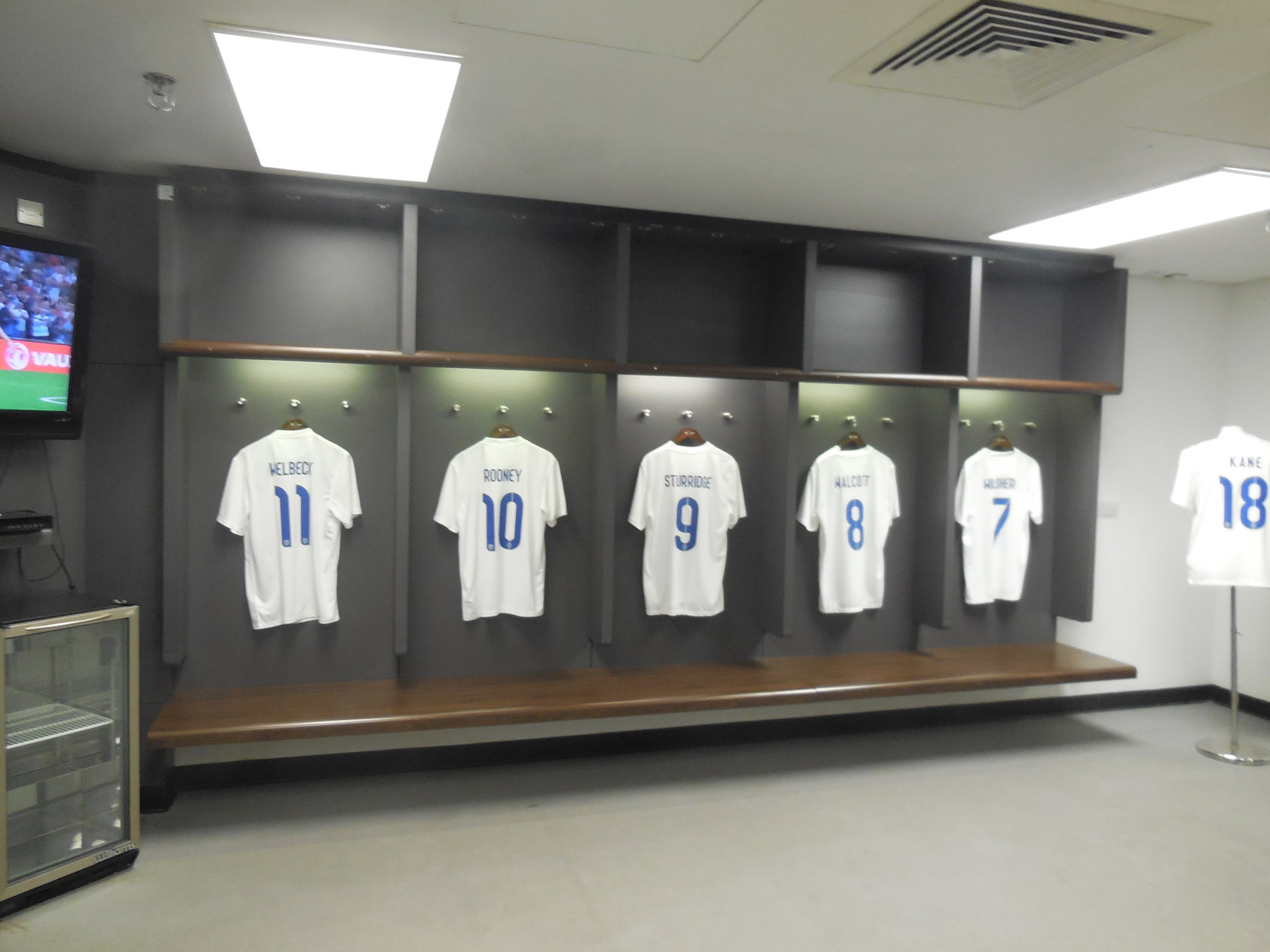In addition to staying active, youth sports are a great way to learn about the importance of teamwork. “You’re trying to figure out how to solve problems, how to work together, sometimes managing the frustrations that come with not everybody doing what you want, when you want them to do it,” says Matthew Sacco, PhD and psychologist with the Cleveland Clinic. “Managing whether your team is successful or not, dealing with loss.” Teamwork is an integral element to any youth soccer team, and can be developed through a strong leader, productive practice, and team-building exercises. However, the changing room can present an unlikely yet ideal space for teamwork and collaboration to thrive as well, with factors such as cleanliness, comfort, and practicality translating into success out on the field in more ways than one.
Functional elements for wellness and collaboration
There are many elements of a well-designed changing room that can translate to success out on the field. For example, whiteboards and plenty of sitting space (benches) allow for pre and post game meetings among players, and work to create a space that is geared towards collaboration and teamwork. For example, a team may use the changing room to discuss last minute game strategies by using the whiteboard to brainstorm ideas, or the coach may use the space to give an impromptu motivational speech before a big game. Lockers are another major element of a proper and effective changing room, as they provide players with the opportunity to safely store their gear, clothing, and other personal items while out on the field. While it may sound insignificant, the peace of mind that their things are safely stored will allow everyone to focus on their time out on the field.
A conveniently located water fountain (or dispenser for reusable water bottles) is another essential aspect of a sports changing room that can easily go overlooked. With changing rooms serving as the first place players will go before and after practice, easy-to-access water will help prevent dehydration while promoting healthy practices among the team as a whole, whether it’s located within a large changing room or right outside. Changing rooms can also provide players with the chance to hydrate before a game or practice as well, and the addition of a cooler with electrolyte drinks can prove to be ideal when providing players with further access to beneficial hydration. “Dehydration is a heavy hitter when it comes to athletic performance,” says Rayven Nairn, M.S., R.D., L.D., a dietitian with the Johns Hopkins University Student Health and Wellness Center. In fact, running low on water and electrolytes can impact athletic performance, endurance, breathing, and mood.
A healthy design is paramount
Cleanliness is imperative to any proper sports changing room, and aids greatly in keeping players healthy and in the game. Regular and professional cleanings, for example, work to provide a healthy space for athletes, and are especially important in regard to areas such as the showers and restrooms in order to prevent the spread of illness and bacteria. This is imperative due to the fact that locker rooms are considered breeding grounds for bacteria, viruses, fungi, and other health concerns. Most viruses and other contagions, according to University Hospitals, love humidity (a combination of moisture and heat). “That pretty much describes every locker room I’ve ever been in,” said physical therapist Paul M. Smith, PT, MS, AT, CGFI.
Ventilation is an additional essential aspect of design for a changing room that promotes athlete health and wellbeing. This is primarily due to the fact that sports changing rooms are a high-humidity environment, which can be conducive to the growth of bacteria and mold when proper ventilation isn’t present. According to the Rhode Island Department of Health, exposure to a large number of mold spores may cause allergic symptoms, including watery eyes, sneezing, coughing, wheezing, difficulty breathing, and headache (to name just a few). Furthermore, it’s noted that these problems are worse indoors — certain molds such as Stachybotrys and Aspergillus can produce mycotoxins under certain conditions — according to the Department of Health, exposure to mycotoxins can result in a more serious illness). The health risks underline the value in a healthy design, especially in changing rooms where showers (and the resulting steam) are present.
In addition to proper ventilation, comfort should be a factor in a well-functioning changing room. Mini-split systems are a ductless heating, ventilation, and air conditioning (HVAC) system that utilizes an outdoor compressor unit and one or more indoor units in order to cool and heat a space. While mini-split systems have become a popular solution for residential and commercial spaces due to their cost-effective nature, there are some considerations to keep in mind when designing a well thought out changing room. For example, mini-split systems require a complicated installation that can take as many as eight hours for proper functioning. Other potential disadvantages are also worth considering, such as high maintenance costs, and the fact that mini-split systems are not well-suited for large spaces due to their limited heating and cooling capacities. For those designing a sports changing room, having an HVAC professional look at the space is a great way to determine what is really needed for the sake of comfort and functionality.
A sports changing room is an integral space for any team, with its purpose going well beyond that of a changing room. For soccer teams, elements such as cleanliness and functionality are crucial to providing a space where health and wellness in addition to teamwork and collaboration can develop and translate onto the field.

